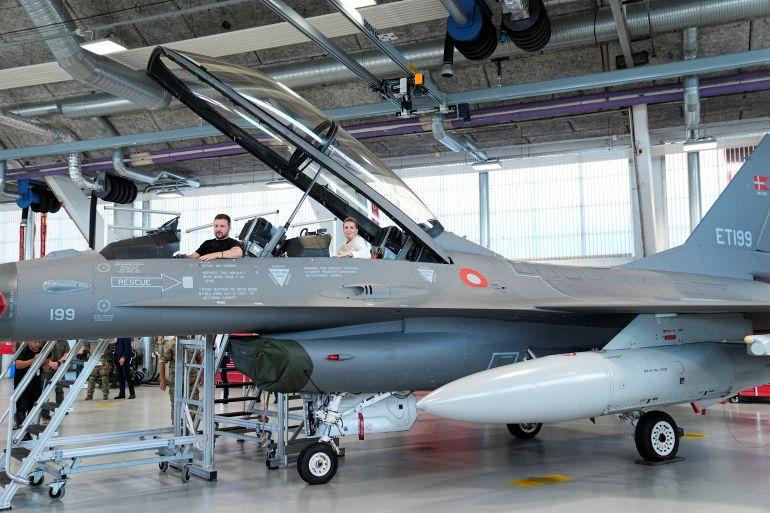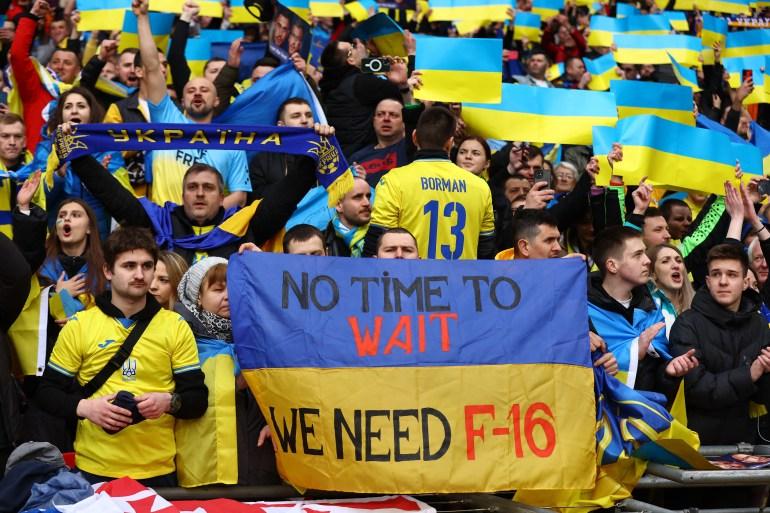Source: ALJAZEERA
ALJAZEERA MEDIA NETWORK

Ukraine's forces are set to receive F-16 fighter jets shortly, but experts believe these jets might not drastically change the dynamic of the conflict.
Kyiv, Ukraine – The first US-manufactured F-16 fighter jets have yet to grace the skies over Ukraine, yet they already have a bounty on their heads.
Fores, a Russian oil equipment manufacturer, has offered 15 million rubles, approximately $170,000, to any Russian pilot who can down an F-16.
Furthermore, Russia plans to deploy supersonic ballistic missiles to obliterate the jets on Ukrainian soil. Ukraine is already planning to station some of these jets in Eastern European countries like Poland to avoid this threat.
“They will undoubtedly be hunted,” stated Lieutenant General Ihor Romanenko, former deputy chief of Ukraine’s general staff of armed forces. “But we will service, hide, equip, and utilize them.”
Within a few weeks, the first dozen F-16s are expected to reach Ukraine as pilot training wraps up.
Known as the Fighting Falcon or the Viper, the F-16 made its first flight in 1974 and has been featured in numerous Hollywood films and video games.
It was developed after the Vietnam War when Soviet MiGs overpowered heavier, slower US fighters.
Despite being produced by Lockheed Martin and being widely used globally, analysts believe it's improbable that the F-16 will drastically change the dynamics of the Russia-Ukraine war.
“F-16s are not a miracle solution,” Romanenko commented.
The positioning of the engine’s air intake is problematic as it can ingest debris from damaged Ukrainian airstrips, posing risks to the aircraft's small wheels.
A significant issue lies in the range of the missiles that will be provided.
The F-16 can carry various weapons, similar to a Lego toy, but the jets Ukraine will get have limited capabilities.
“We are bound by the weaponry they will provide,” Romanenko noted.
The missiles will likely have a range of 120km (75 miles), whereas Russian missiles can reach up to 300km (186 miles).
“We will have to adapt,” Romanenko said.
The training for Ukrainian pilots lasted six months, a short period to grasp the basics of flying, evading enemy fire, and engaging enemy aircraft.
Ukrainian pilots also needed to learn English and adapt their flying habits from Soviet-produced fighter jets designed to counter F-16s.
More Ukrainian pilots will undergo similar training.
“The training will be fundamentally basic,” said Mykhailo Zhirokhov, a military expert based in Chernihiv, Ukraine.
Therefore, the F-16s will mainly serve as carriers of high-precision weapons.
The Ukrainian Air Force currently possesses US-made GBU precision-guided bombs capable of gliding for about 100km (62 miles).
They also utilize Joint Direct Attack Munition kits to convert standard bombs into precision-guided weapons and have French-made AASM guided bombs.
The F-16s will intercept Russian cruise missiles and modified Shaheed kamikaze drones from Iran. However, concerns remain about Russian missiles targeting Ukrainian airfields where F-16s could be stationed, requiring them to utilize these airfields only for refueling.
Ukraine's military hopes for AIM-120 air-to-air missiles to counter Russia's aviation advantage.
Russian aircraft have not had to fly over Ukrainian positions as their KAB bombs can glide for kilometers to destroy fortified structures.
These bombs have been touted as effective and almost without countermeasures, aiding in the capture of areas like Avdiivka.
Only a few F-16s will be stationed in Ukraine to deter Russian planes carrying KABs, according to a German analyst.
“F-16s are a significant asset, too valuable to risk,” said Nikolay Mitrokhin of Germany's Bremen University.
They are unlikely to engage directly with Russian fighter jets, focusing instead on missile strikes and only attacking ground targets from safe distances.
The Netherlands, Belgium, Denmark, and Norway have vowed to supply 85 F-16s by 2028, as they receive more advanced F-35 jets from the US.
This will form four squadrons, fewer than the 120 jets Ukrainian President Volodymyr Zelenskyy requested to counter 300 Russian aircraft.
 Ukrainian fan with a banner saying 'We need F-16' at Wembley Stadium, March 26, 2023.
Ukrainian fan with a banner saying 'We need F-16' at Wembley Stadium, March 26, 2023.
Ukraine's air force has seen years of neglect and underfunding.
Following the 1991 Soviet collapse, Kyiv transferred its bomber fleet to Russia.
Ukraine's Su-27 fighters, some as old as their pilots, suffer from outdated, easily-jammed radars.
Russia uses more modern MiGs and Sukhois, with Ukraine having destroyed some on Russian airfields.
Ukraine lost 22 MiGs, with donations from Germany, Poland, and Slovakia more often serving as spare parts.
France and Sweden offered advanced jets, but the US pushed for F-16s, aiming for long-term use in Ukraine.
“This is about protecting the US military industrial complex and geopolitical influence,” explained Kyiv-based analyst Aleksey Kushch.
Your email address will not be published. Required fields are marked *